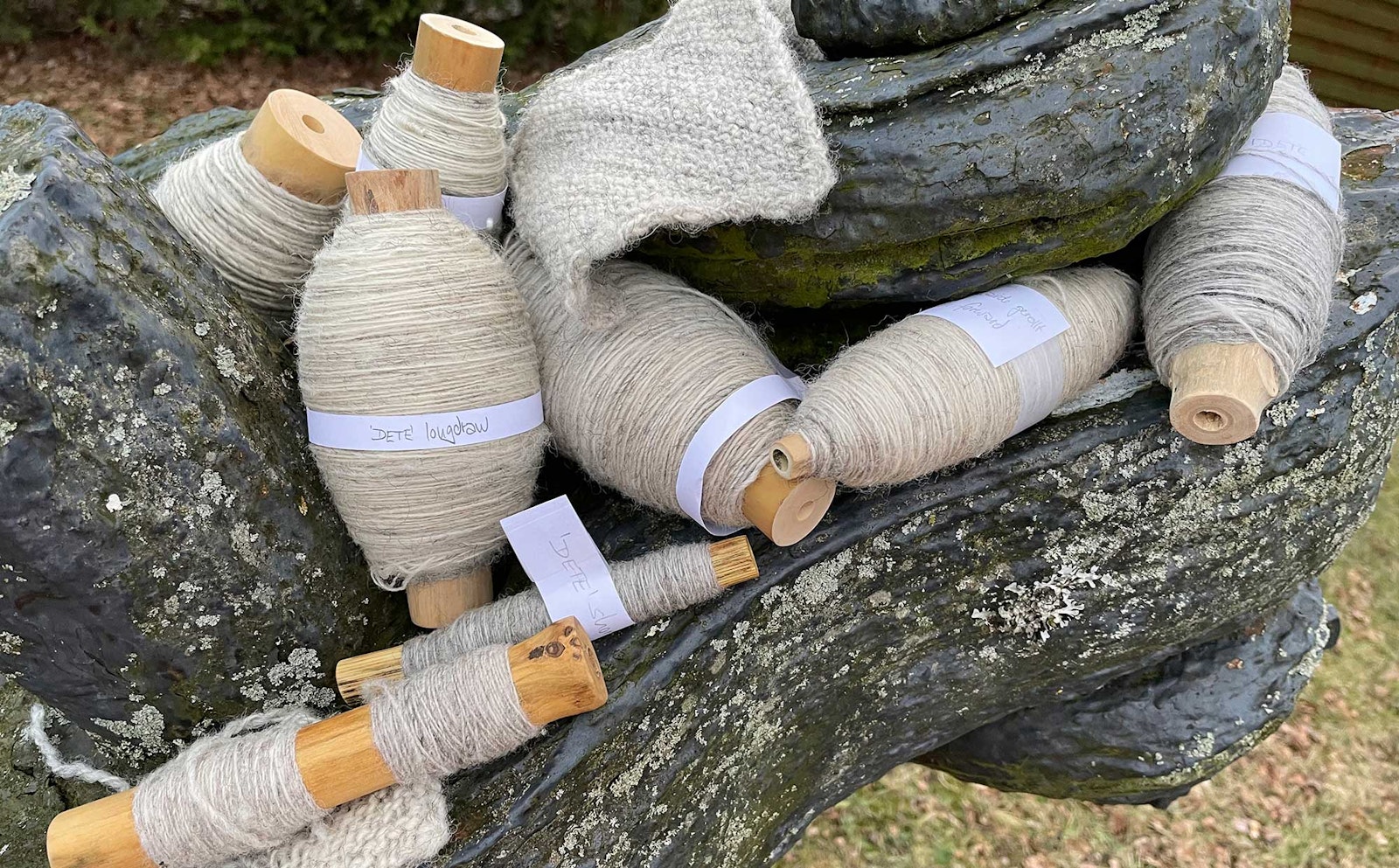When writing her article “Wood and Wool” for Spin Off Fall 2021, A. Sabine Schröder-Gravendyck had so many examples, tips, and captivating photos of her foraged storage bobbins that we could not print them all. This web article is a companion to Sabine’s published article, so you will find a how-to in Spin Off detailing the selection, cutting, and finishing process. We hope you enjoy seeing more of Sabine’s creative work as much as we do. —Editor
Most of the time, my spinning includes both a project in progress and something else that’s for the joy of spinning only. The latter is for not-thinking, for being in the flow. I usually spend time with this meditative spinning in the evening and morning.
This spinning practice does lead to an accrual of threads and yarns stored on bobbins, and completed more or less with notes on the label. Some will quickly flow into a new project. Some will sit there for a while until they are used. Others will be part of my wooly references/inspirations and live in a wooly basket (find the pattern in Spin Off Summer 2020). There’s need for plenty of bobbins. And as I like to use natural, beautiful, and sustainable tools, I make them myself. Here are a few of the uses and solutions I’ve explored along the way.

Pieces of elder with different diameters of pith.
#1. A Pith for All Reasons
Many woods grow a pith in the middle (of twigs and branches): Elder, forsythia, black currant, buddleia (summer lilac), rose, weigela, and fig, for example. Other plants like berries, climbing plants, and perennials may not come immediately to mind when thinking about material for making “wooden” things. But in fact, fennel, raspberry, blackberry, hydrangea, grape vine, physalis, and bamboo (a grass) make great bobbins.
Elder is a remarkable tree, venerated for providing food, medicine, beauty, and access to the spiritual world. The wood is beautiful and easy to work with. Depending on age, speed of growing, and other factors there’s a broad variety of wood thickness and pith diameters.
Sometimes the pith is thick and the canal you get after drilling it out may be too wide for your bobbin winder or another use requiring a smaller diameter. A little piece of felt does the trick.
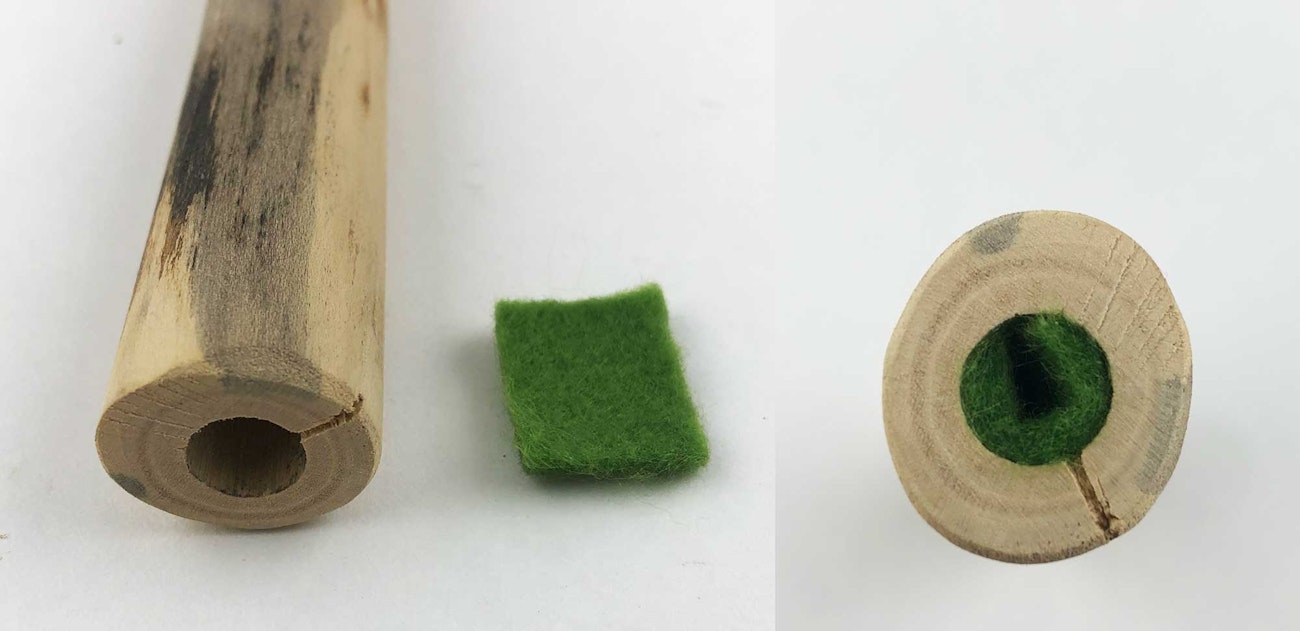
If the center canal is too large once the pith is removed, use a bit of felt on one or both ends for a better fit.
#2. Where There’s a Quill, There’s a Way
Elder, raspberries, blackberries, and fennel have appropriate sizes and structure to become quill bobbins. Paper quills—sometimes called pirns—are used in weaving shuttles and by some spinners who are storing very fine singles. Next time, try looking in the garden when you need a quill!
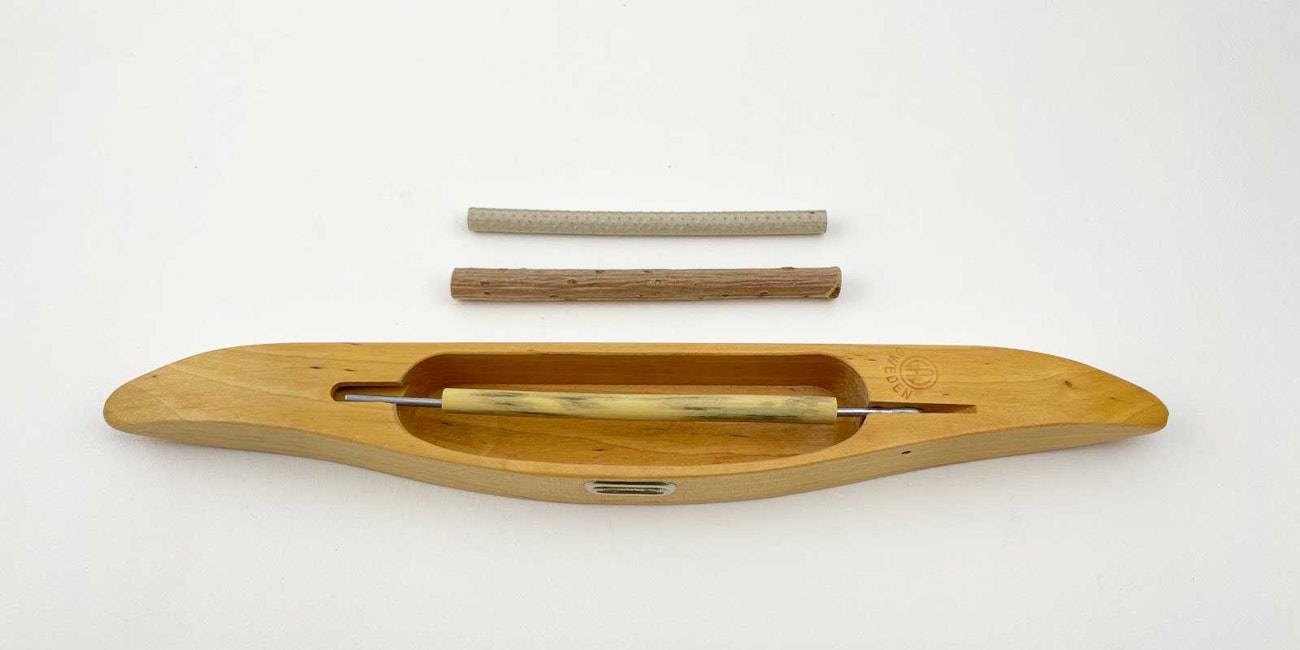
Many wooden structures make great quills. This Elder quill bobbin in a weaving shuttle is shown with a common paper quill.
#3. Comforting Endcaps
If you are storing a large amount of singles or plied yarn or working with a slippery fiber, you might feel more secure with a bobbin with endcaps. Taking a simple handmade bobbin and adding two slices of wood with a bigger diameter to the ends gives you a bobbin with even more storage space. You can use glue (easy), small screws (not so easy), or wooden dowels (a bit tricky) to attach the pieces.
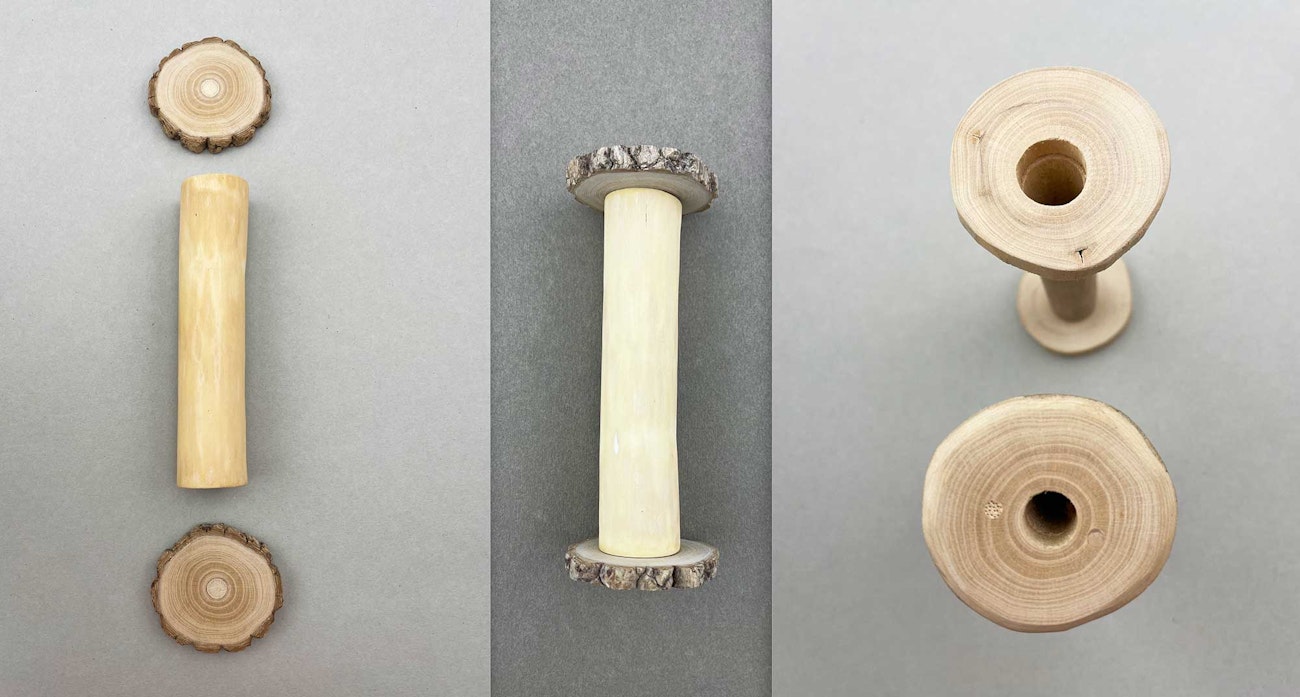
Add narrow slices of a branch with a larger diameter to create comforting endcaps.
#4. Just Dye It
Whether natural dyes or acid dyes, just throw the bobbin into your dyebath! Some woods can be cooked in the dyebath, while others might crack. Try with a low temperature or cooled dyebath. Some woods take colors more easily than others.
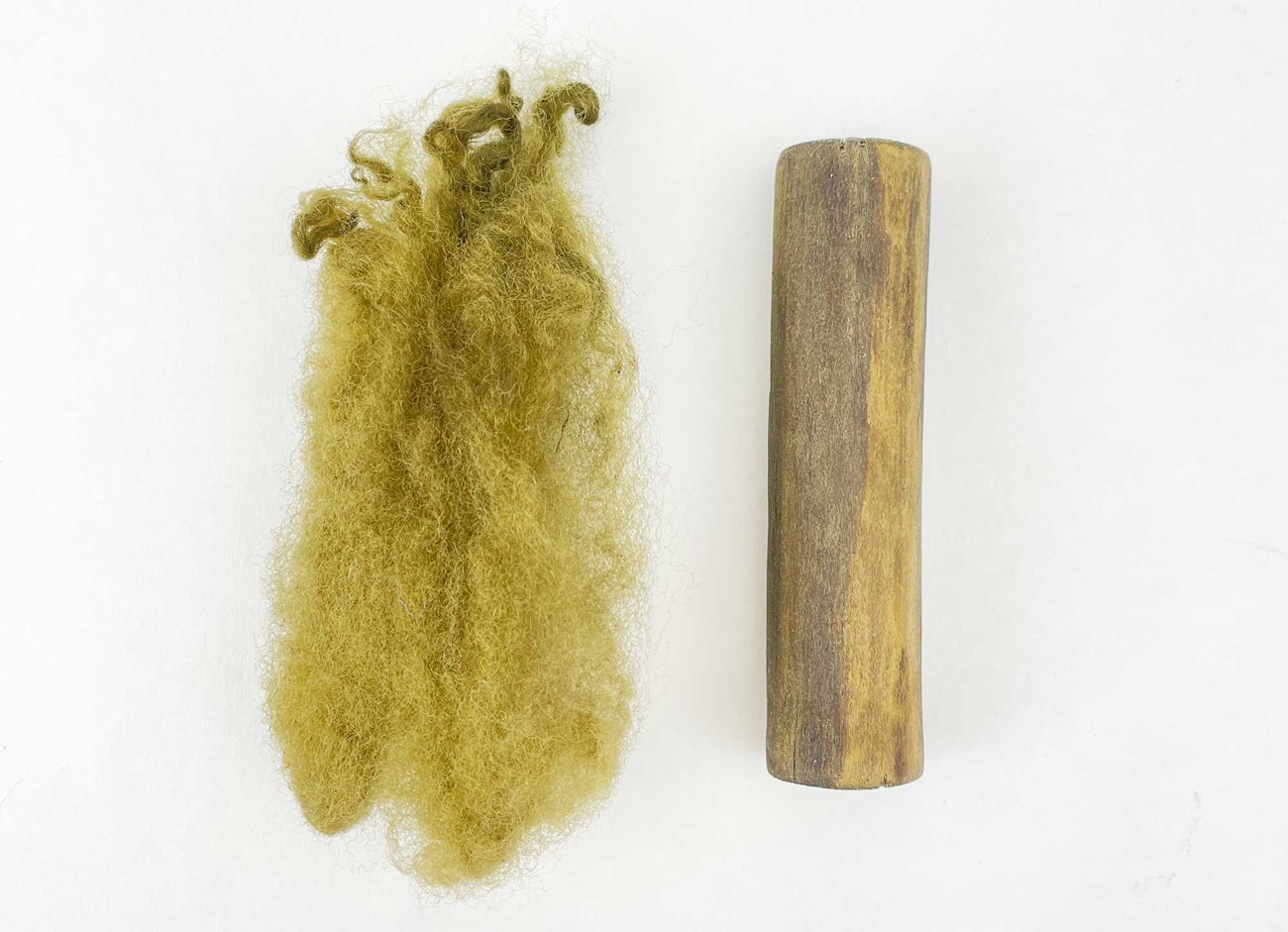
Wool and bobbin dyed together in the same stinging nettle dye bath, spiced with a hint of iron.
Every tree and shrub has a genuine appearance called habitus—a typical way of growing roots, leaves, and flowers. Take a few minutes to look at these plants with interest and affection. You’ll discover how they unfold their leaves, when they will start to bloom, and whether they are hungry or thirsty. Revisiting trees and shrubs will first lead to acquaintances, then to friendships. Just as spinners explore sheep breeds and flocks, I hope you will enjoy exploring shrubs and trees!
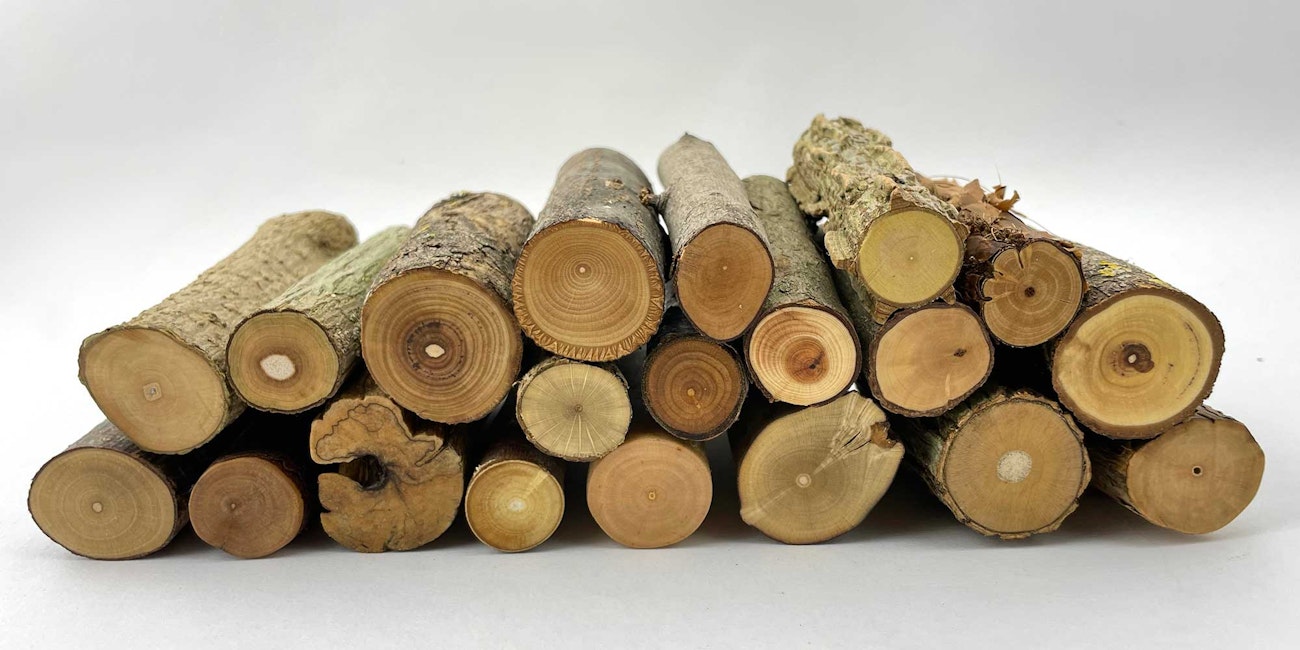
Branches of (left to right) 1st row: hazelnut, blackthorn, rosemary, ficus, apple, gnarled Elder, Elder, honeysuckle. 2nd row: forsythia, buddleia, lilac, English ivy, cherry, yew, spindle tree, lilac. Top 3: linden, hawthorn, elm, climbing hydrangea.
A. Sabine Schröder-Gravendyck, D.V.M., makes her home on Germany’s North Sea coast where she works as a naturalist and educator in sustainability and ecology. She is always looking for new ways to help people merge their personal spaces with nature. You can find more about Sabine on her website, florafauna.pro.

